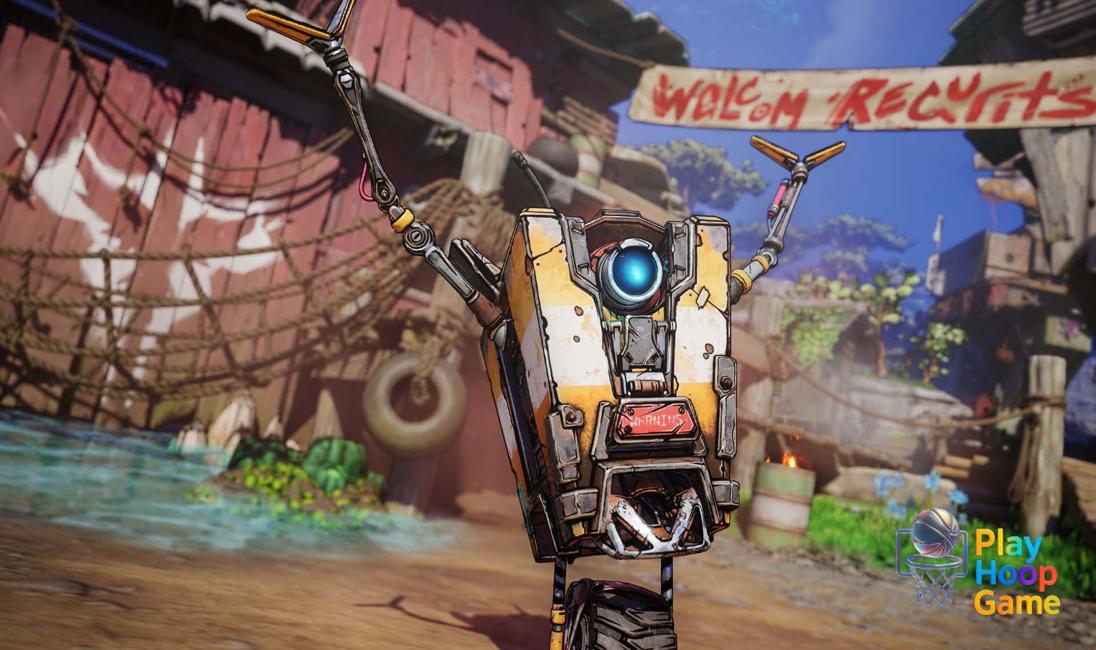Okay, let's talk Borderlands 4. Specifically, the potential for a PC performance situation. A 'fiasco,' if you will. Because if there's one thing that can instantly sour the hype for a game I'm desperately anticipating, it's the horrifying realization that my rig is about to choke harder than a loot tink on a vault monster. I remember when this approach first emerged with Borderlands 3, and I think that it needs to be better for the upcoming Borderlands 4.
We all remember the…optimisation choices made with certain recent releases. No need to name names (cough Jedi Survivor cough). But the idea of another game launching in a less-than-ideal state, especially one as visually bombastic as Borderlands? Sends shivers down my spine. I mean, give me a stable 60fps and I'm a happy Vault Hunter. Anything less and I might just start using a Jakobs pistol out of spite.
Why the Concern About Borderlands 4 PC Performance?
Here's the thing: Borderlands has always pushed boundaries, visually. That cell-shaded aesthetic, those particle effects, the sheer volume of loot exploding from every enemy... it's a recipe for GPU stress. Now, I'm not saying Gearbox doesn't care about PC performance (they've generally been pretty good, actually). But each new entry brings more complexity, more visual flair, and more potential for things to go sideways. Think about it this way: the leap in fidelity from Borderlands 2 to 3 was significant. And Borderlands 3, while eventually patched into a respectable state, had a rocky launch, performance-wise, for a lot of people. So what is Gearbox doing to combat this problem?
And the market has changed. Gamers are savvier. They're expecting (rightfully so) a baseline level of performance that wasn't necessarily the norm even five years ago. They are wanting to play on the Poki website. Plus, PC hardware is… well, it's a mess. The sheer range of CPUs, GPUs, RAM configurations, and monitor resolutions out there makes optimization a nightmare. It's not like consoles where you have a fixed hardware target. I have worked with this technology and know how hard it is to get right.
Digging Deeper: Potential Culprits
Let's brainstorm some of the usual suspects when it comes to PC performance woes. First off, there's the engine itself. Borderlands 3 used Unreal Engine 4, and while it's a solid engine, it's not without its quirks. Will Borderlands 4 stick with UE4, or will they make the jump to Unreal Engine 5? UE5 offers some incredible visual capabilities, but it also demands a hefty performance tax. That Lumen global illumination, those Nanite micro-polygons… gorgeous, but potentially system-melting.
Then there are the specific graphical features. Things like ambient occlusion, shadow quality, and draw distance can have a huge impact on frame rates. And let's not forget about the dreaded 'particle effects.' Borderlands is notorious for showering the screen with explosions, elemental damage, and loot showers. All of that visual goodness adds up, and if it's not optimized properly, it can bring even high-end PCs to their knees.
And optimization is not just a thing you can ignore, optimization is key to a game that consumers will enjoy. No one wants to spend top dollar on a game and have to run it at low settings.
The Dreaded Day-One Patch: Hope or Hype?
Ah, the day-one patch. The modern gaming ritual. Is it a sign of proactive problem-solving, or a band-aid over deeper issues? Honestly, it's usually a bit of both. I'm cautiously optimistic that Gearbox will address any major performance problems with a day-one patch (or, more likely, a series of patches in the weeks following launch). But I'm also realistic. A patch can only do so much. If the underlying code is fundamentally flawed, no amount of post-launch tinkering will truly fix it.
But let's not be all doom and gloom. Gearbox has a pretty good track record of supporting their games post-launch. They've consistently released patches and updates to address bugs, improve performance, and add new content. So, there's reason to believe that they'll do the same with Borderlands 4. The frustrating thing about this topic is we do not know the future, so all we can do is speculate.
Borderlands 4 PC: What Can We Do?
So, while we wait with bated breath for more concrete information (and, eventually, the game itself), what can us mere mortals do to prepare for the potential Borderlands 4 PC performance fiasco? Well, for starters, make sure your drivers are up to date. Seriously. It's the low-hanging fruit of PC gaming optimisation, and it can often make a surprising difference.
Beyond that, familiarize yourself with your PC's hardware. Know your CPU, your GPU, your RAM. Understand their limitations. That way, when the inevitable graphics settings tweaking begins, you'll have a better idea of what to prioritise. And don't be afraid to experiment! Lowering shadow quality, disabling ambient occlusion, or reducing draw distance can often yield significant performance gains without drastically impacting visual fidelity. The sad reality of gaming is that no matter how much you spend, you can always spend more. It is a never ending cycle.
FAQ: Borderlands 4 PC Performance Panic
How do I know if my PC can even run Borderlands 4?
This is the million-dollar question, isn't it? Unfortunately, we won't know for sure until the official system requirements are released. But as a general rule, if your PC can comfortably run modern AAA games at medium to high settings, you should be in decent shape. Pay close attention to the recommended GPU and CPU specs, as those are usually the biggest bottlenecks. For example, as highlighted in Wikipedia, a lot of gamers have older PC's.
Why are particle effects always such a performance hog?
Ah, particle effects. They're visually stunning, but computationally expensive. Each particle is essentially a tiny object with its own properties (size, color, movement, etc.). When you have hundreds or thousands of these particles on screen at once (like in a Borderlands explosion), your GPU has to work overtime to render them all. It's a real performance killer!
What if the Borderlands 4 PC performance is just plain bad, even on good hardware?
Okay, let's be honest: this is a legitimate concern. If the game is poorly optimized from the get-go, even the beefiest PCs will struggle. In that case, your best bet is to wait for patches, tweak graphics settings aggressively, and (if necessary) consider upgrading your hardware. If you're tech savvy, you can check CPU and GPU utilization during gameplay and optimize accordingly. If your PC is struggling with Borderlands 4, it may be a sign to upgrade.
Will Borderlands 4 have DLSS or FSR support?
This is a big one! DLSS (Nvidia's Deep Learning Super Sampling) and FSR (AMD's FidelityFX Super Resolution) are upscaling technologies that can significantly boost performance with minimal visual quality loss. If Borderlands 4 supports either of these technologies, it could be a game-changer for PC performance. Fingers crossed! It would also provide another tool to allow gamers to optimize their game.

























